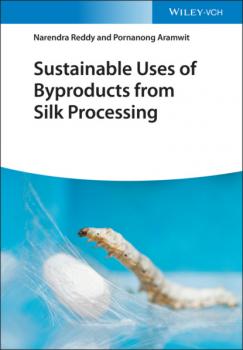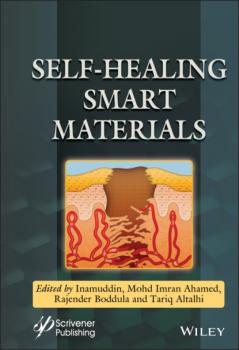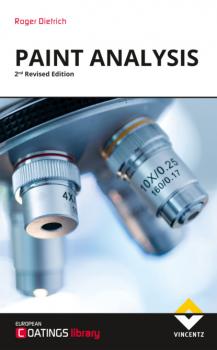Химия
Различные книги в жанре ХимияInfrared Spectroscopy of Symmetric and Spherical Spindles for Space Observation 1
This book is dedicated to the description and application of various different theoretical models to identify the near and mid-infrared spectra of symmetric and spherical top molecules in their gaseous form. <p>Theoretical models based on the use of group theory are applied to rigid and non-rigid molecules, characterized by the phenomenon of tunneling and large amplitude motions. The calculation of vibration-rotation energy levels and the analysis of infrared transitions are applied to molecules of ammonia (NH3) and methane (CH4). The applications show how interactions at the molecular scale modify the near and mid-infrared spectra of isolated molecules, under the influence of the pressure of a nano-cage (the substitution site of a rare gas matrix, clathrate, fullerene or zeolite) or a surface, and allow us to identify the characteristics of the perturbing environment. <p>This book provides valuable support for teachers and researchers but is also intended for engineering students, working research engineers and Master's and doctorate students.
Meltdown
The human drama, and long-term lessons, of the Fukushima nuclear disaster The Fukushima nuclear disaster in March 2011 presented an enormous challenge even to Japan, one of the world's most advanced and organized countries. Failures at all levels—of both the government and the private sector—worsened the human and economic impact of the disaster and ensured that the consequences would continue for many years to come. Based on interviews with more than 300 government officials, power plant operators, and military personnel during the years since the disaster, Meltdown is a meticulous recounting and analysis of the human stories behind the response to the Fukushima disaster. While the people battling to deal with the crisis at the site of the power plant were risking their lives, the government at the highest levels in Tokyo was in disarray and the utility company that operated the plants seemed focused more on power struggles with the government than on dealing with the crisis. The author, one of Japan's most eminent journalists, provides an unrivaled chronological account of the immediate two weeks of human struggle to contain man-made technology that was overwhelmed by nature. Yoichi Funabashi gives insights into why Japan's decisionmaking process failed almost as dramatically as had the Fukushima nuclear reactors, which went into meltdown following a major tsunami. Funabashi uses the Fukushima experience to draw lessons on leadership, governance, disaster resilience, and crisis management—lessons that have universal application and pertinence for an increasingly technology-driven and interconnected global society.
Paint Analysis
The market demands modern, high-performance, flawless paints that possess specified properties. Where deviations from set points occur, the cause must be investigated and the error must be remedied. What «standard methods» don't disclose is why a particular coating either meets or fails to meet a requirement. Thus the author presents modern analytical techniques and their applications in the coatings industry that answer further complex questions. The information in this book can be used for performing failure analysis, production control and quality control, and also meet the requirements of modern high-level quality management. An excellent combination of theory and practice for formulators, paint engineers and applied technologists seeking a sound basic introduction to instrumental paint analysis and concrete answers to everyday problems.
Computational Methods in Organometallic Catalysis
The book includes a historical introduction to organometallic chemistry, a survey of mechanisms, and an extensive introduction to quantum mechanical computational methods.
Quantum Mechanical Foundations of Molecular Spectroscopy
A concise textbook bridging quantum theory and spectroscopy! Designed as a practical text, Quantum Mechanical Foundations of Molecular Spectroscopy covers the quantum mechanical fundamentals of molecular spectroscopy from the view of a professional spectroscopist, rather than a theoretician. Written by a noted expert on the topic, the book puts the emphasis on the relationship between spectroscopy and quantum mechanics, and provides the background information and derivations of the subjects needed to understand spectroscopy including: stationary energy states, transitions between these states, selection rules, and symmetry. The phenomenal growth of all forms of spectroscopy over the past eight decades has contributed enormously to our understanding of molecular structure and properties. Today spectroscopy covers a broad field including the modern magnetic resonance techniques, non-linear, laser and fiber-based spectroscopy, surface and surface-enhanced spectroscopy, pico- and femtosecond time resolved spectroscopy, and many more. This up-to-date resource discusses several forms of spectroscopy that are used in many fields of science, such as fluorescence, surface spectroscopies, linear and non-linear Raman spectroscopy and spin spectroscopy. This important text: Contains the physics and mathematics needed to understand spectroscopy Explores spectroscopic methods the are widely used in chemistry, biophysics, biology, and materials science Offers a text written by an experienced lecturer and practitioner of spectroscopic methods Includes detailed explanations and worked examples Written for chemistry, biochemistry, material sciences, and physics students, Quantum Mechanical Foundations of Molecular Spectroscopy provides an accessible text for understanding molecular spectroscopy.
Patty's Industrial Hygiene, Evaluation and Control
Since the first edition in 1948, Patty’s Industrial Hygiene and Toxicology has become a flagship publication for Wiley. During its nearly seven decades in print, it has become a standard reference for the fields of occupational health and toxicology. The volumes on industrial hygiene are cornerstone reference works for not only industrial hygienists but also chemists, engineers, toxicologists, lawyers, and occupational safety personnel. Volume 3 covers Recognition and Evaluation of Physical Agents and Biohazards. All of the chapters have been updated and a new chapter on Robotics has been added. These subjects are increasing in importance to industrial hygienists.









